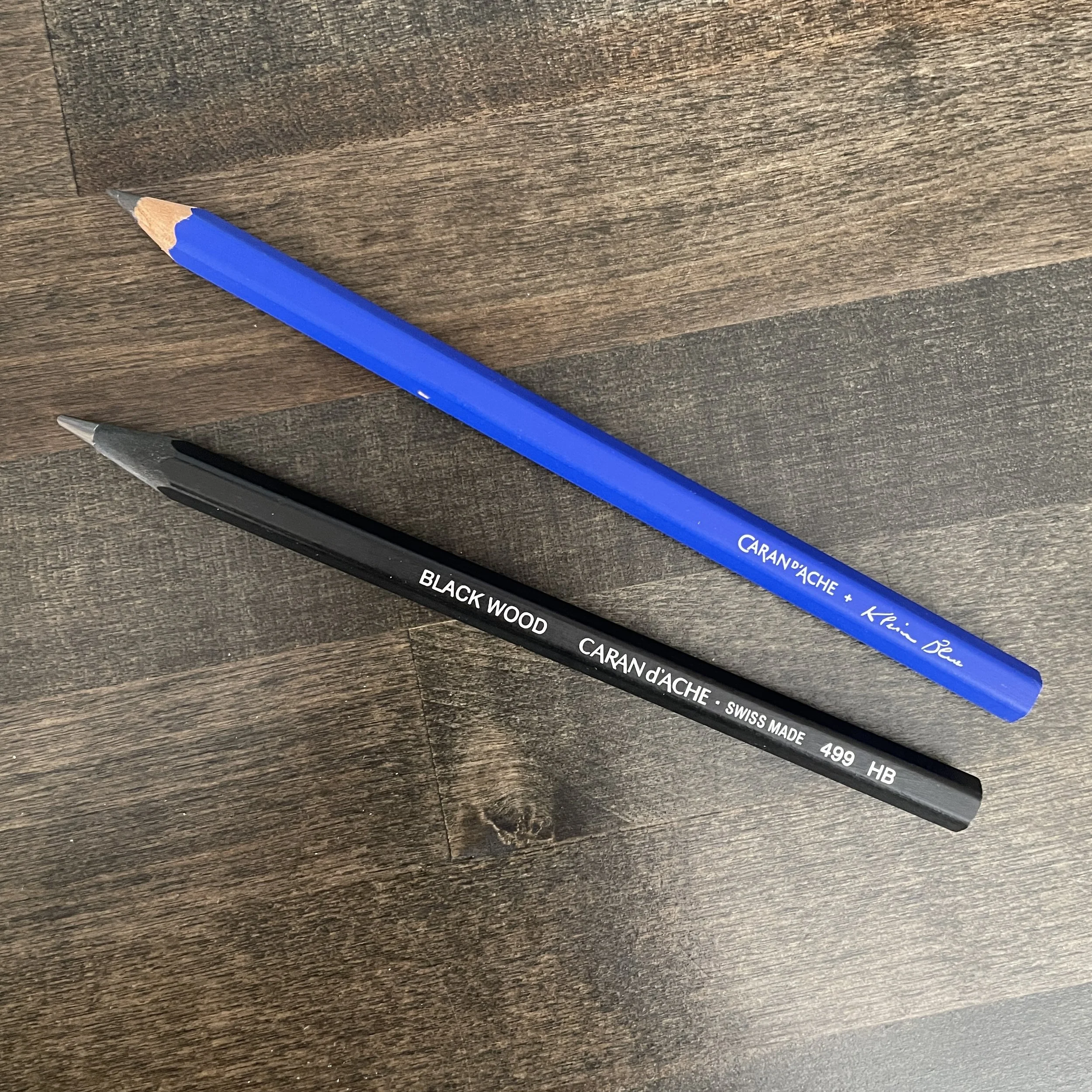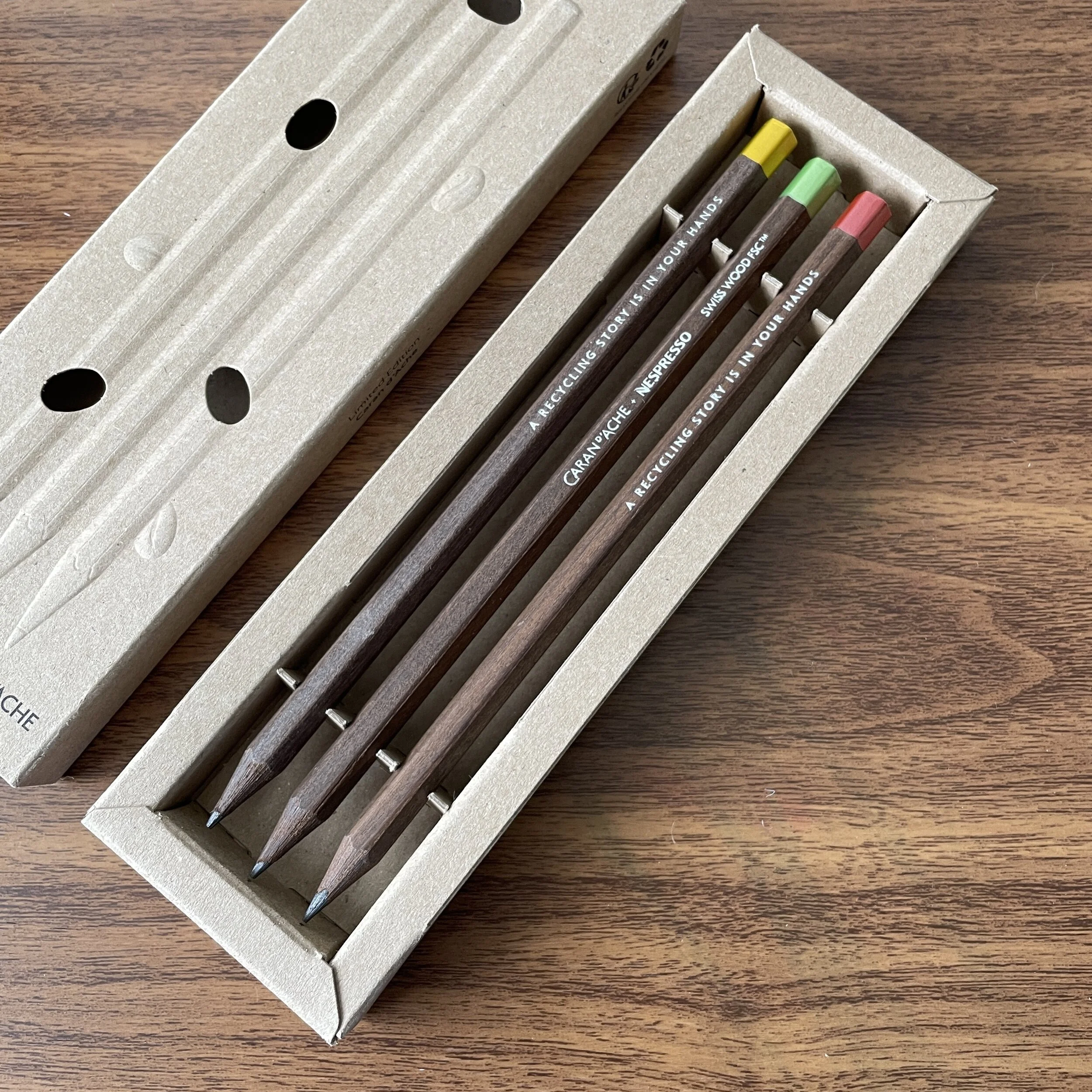We’re inching towards the close of 2022, and soon I will have to take stock of my progress on a major personal goal from this year: thinning out my stationery accumulation. And I’m not talking about adopting a “one-in, one-out” stance, where I have to get rid of something to buy something new. I started this year with the intention of significantly reducing the footprint my collection/accumulation occupies in my home. As I worked my way back through “the stash,” it wasn’t so much the fountain pens that shocked me, but rather the paper and the pencils.
Why So Many Pencils?
For starters, they’re easy to accumulate. I got back into pencils shortly before the Blackwing relaunch back in the early 2010s, when I picked up a dozen blue Palomino HB pencils based off the recommendation of Johnny over at Pencil Revolution (which is, by the way, no longer a blog but now a publisher and bookbinding company - check them out). To be fair, I do use a lot of pencils - just not at the pace at which I purchased them, especially before prices started to rise. I had a Blackwing Volumes and/or a Baron Fig subscription for a couple of years, and between the quarterly subscription deliveries and regular visits to C.W. Pencil Enterprise, it started to add up. Remodeling my office this past summer forced me to pull everything out of storage, get it into the open, and see how bad the problem was.
I have a “healthy” stash of jumbo pencils, but honestly probably not as many as I could use. Good ones are rare and hard to find.
So What Pencils Do I Actually Use?
Highlighter and Annotation Pencils. By far the type of pencil I use the most is the highlighter pencil (or “drylighter” or “dryliner”), either as a stand-alone pencil or as a double-ended highlighter/graphite combo. I also use a lot of the red/black double-ended annotation pencils and go through these at a fairly good clip while I’m working or reading. I prefer highlighter pencils over the liquid-ink version because they smear less, don’t bleed through thin paper, and you don’t have to wait for them to dry.
Capped Pencils with No Erasers. I’ll discuss this a bit more below, but I’ve come to appreciate the lighter weight and balance of “capped” pencils without erasers, and I especially love the aesthetics of a finished pencil cap. Of course, I still use pencils with integrated erasers, but at the end of the day I think I enjoy the classic round ferrule over the Blackwing.
Jumbo Pencils. They’re not just for kids. Like an oversized fountain pen, a quality jumbo pencil offers increased comfort and control over your writing. If you find a good one, there’s nothing quite like a smooth jumbo graphite core.
Natural Wood Pencils. Probably the most “elemental” writing experience you can get, a natural wood pencil (finished or unfinished) puts little more in your hand than wood, graphite, and sometimes a little varnish. When I want to get back to basics and write with something that’s not distracting, I’ll pick up one of these.
Do you know what I don’t find myself writing with frequently? Blackwings. This is not a knock on the quality - they’re very good pencils, but so many of the special editions I have include the “Pearl” that’s too waxy for my taste. The Blackwings I prefer are either the original extra dark or the extra-firm. Plus I’ve come to feel that the larger ferrule throws the balance off on the pencil, but again it’s all personal preference. For that reason I’ve sold off the bulk of my stash over the course of the past year.
Highlighter pencils are just as legible, in my experience, as their liquid-ink counterparts.
Why I Probably Won’t Stop Buying Pencils
Even though I have more pencils than I personally could ever use in a lifetime, I probably won’t stop buying them. Why? Well, for at least the next few years I have an elementary school-aged child, who churns through them at the pace of two or three a week (either from use or loss). If I need to thin the herd, I’ll simply give them to her, or alternatively donate a bunch of pencils to local school-supply drives. The second reason I won’t stop buying woodcase pencils is that they tend to be a relatively inexpensive luxury, that doesn’t take up space forever. Even the most expensive pencils, such as Blackwings, Caran d’Ache Swiss Woods, or the Crayons de la Maison Caran d’Ache, cost $3 to $10, and due to the quality of the wood and graphite they will give you a lot of mileage for your money. When you use them up, they’re gone, and they don’t leave behind waste to go to the landfill. Therefore, if I see a well-done pencil that’s either of high quality or seems super unique or creative, I’m probably going to buy it without thinking much of it if the package costs $50 or less. (Of course, I’m talking new pencils. Some people pay crazy per-pencil prices for vintage stock, and that’s an entirely different calculation.)
Back before prices started rising, I was not immune to stocking up on some relatively rare vintage pencils.
Pencils Should Not Be Thought of as a Cheap Commodity
Sustainably sourced wood, quality graphite, consistently good construction and an attractive finish (often in small-batch production) cost money, which is why today the price of good pencils is inching upwards, and due to the added impact of inflation and supply chain constraints, in some cases skyrocketing. That said, I don’t necessarily understand why the some people will pay $30-50 for a single bottle of fountain pen ink yet balk noisily at paying similar prices for a pack of good pencils. Both are luxury items, both are consumables, yet the pencils are more apt to be derided as an “overpriced” “cash grab” than the ink, despite the fact that the manufacturer’s profit margin on the 30-50ml bottle of liquid is almost certainly higher. Today’s consumers have been trained to think of pencils as an inexpensive commodity item that shouldn’t cost more than $0.25 per pencil, which is a key reason why so many of the school pencils readily available in stores are so cheap - and offer such a terrible writing experience.
Two favorite jumbo pencils that sadly aren’t made anymore: the Caran d’Ache “Black Wood” and the “Klein Blue” Maxi. While Caran d’Ache has released a jumbo pencil set in their current “Colour Treasure” limited edition series, they’ve sold out and I’m scrambling to get more.
Takeaways and Where to Start
As for me, I plan to keep buying and selling quality pencils. If I stopped purchasing today, I would have more than enough good pencils to last me for the rest of my life, but we all know that’s not going to happen ;) For those of you looking to experience a good pencil for the first time, you can absolutely do so with out spending a lot of money. We stock a range of woodcase pencils, mechanical pencils, and lead holders in the T.G.S. Curated Shop, ranging from classic yellow Tombow office pencils that cost around $1.50, to higher-end Caran d’Ache Swiss Woods and house specialty pencils geared towards enthusiasts and collectors.
The Gentleman Stationer is supported entirely by purchases through the T.G.S. Curated Shop and pledges via the T.G.S. Patreon Program. This post does not contain paid third-party affiliate links.



